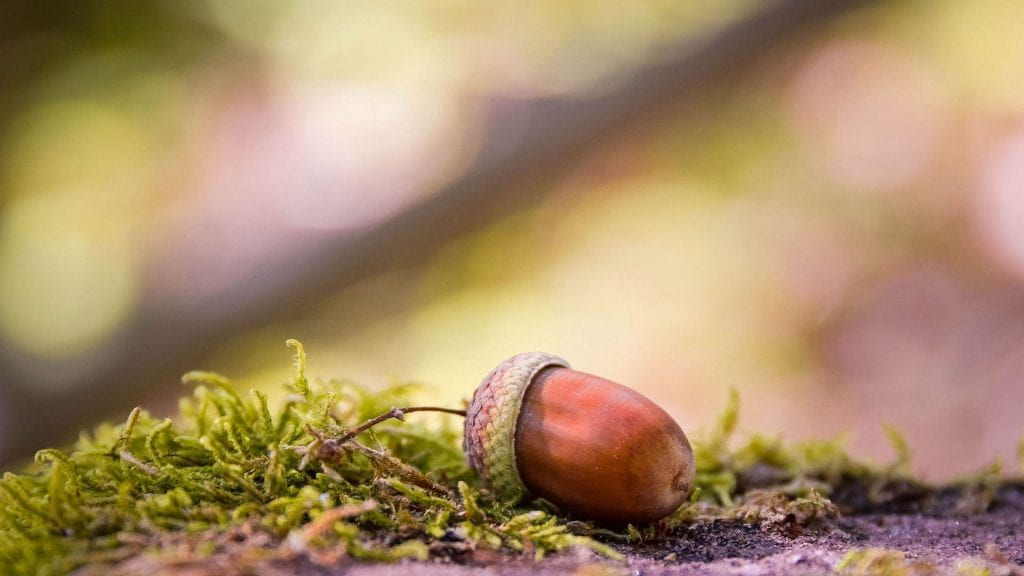By Claudine Sullivan, Walden Master Gardener Volunteer
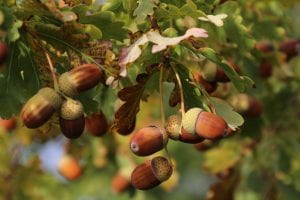 One of the most recognizable symbols of fall is a branch of oak leaves and a couple of acorns. Oak trees (Quercus spp.) have been around for approximately 55 million years old, with the oldest North American specimen being 44 million years old. Long before pumpkins and corn stalks came to symbolize harvest and bounty, people depended on the humble acorn and majestic oak tree for sustenance and shelter. Today we think of oak trees in terms of shade, firewood, and sturdy furniture, but as acorns can be stored for long periods of time and the flour made from them is quite nutritious for thousands of years acorns were the main food staple for people in balanocultures.
One of the most recognizable symbols of fall is a branch of oak leaves and a couple of acorns. Oak trees (Quercus spp.) have been around for approximately 55 million years old, with the oldest North American specimen being 44 million years old. Long before pumpkins and corn stalks came to symbolize harvest and bounty, people depended on the humble acorn and majestic oak tree for sustenance and shelter. Today we think of oak trees in terms of shade, firewood, and sturdy furniture, but as acorns can be stored for long periods of time and the flour made from them is quite nutritious for thousands of years acorns were the main food staple for people in balanocultures.
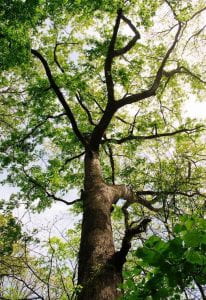
Oak trees are a dominant plant in many forest ecosystems and currently there are about 500 species of oaks growing in temperate and tropical climates throughout the world. There are about 90 species of oak trees native to the United States including eleven here in New York.
All oak trees produce acorns, this is the fruit and contains a nutrient rich seed. It can be hard to imagine that a single acorn can become a 200-year-old tree cable of producing millions of other acorns. Acorn production does not begin until an oak tree is about 20 years old, with peak production when the tree is between 50 to 80 years old. After that acorn production tapers off, although some trees will produce acorns well into their second century and beyond.
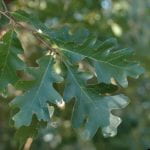
Oaks in North American are divided into two groups: White Oaks and Red (Black) Oaks. Each group has distinct leaf shape and acorn production strategy. White or annual oaks have rounded-lobed leaves, flower later in the spring than red oaks, and have sweet tasting acorns that mature in one season. The acorns of the white oaks can start to germinate as soon as they hit the ground in the fall.
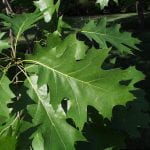
Red or biennial oaks have pointed-lobed leaves, flower earlier in the spring than white oaks, and have bitter tasting acorns that take two years to mature. Because their acorns take two years to mature, it is possible to have two seasons of acorns on each twig. The acorns of the red oaks need a period of cold stratification that lasts 6-8 weeks in order to germinate.
Oaks Native to New York State
| White / Annual Oaks | Red / Biennial Oaks |
|---|---|
| Bear Oak Quercus ilicifolia | Chestnut Oak Quercus montana |
| Chinkapin Oak Quercus muehlenbergii | Black Oak Quercus velutina |
| Dwarf Chinkapin Oak Quercus prinoides | Northern Red Oak Quercus rubra |
| Post Oak Quercus stellata | Pin Oak Quercus palustris |
| Swamp White Oak Quercus bicolor | Scarlet oak Quercus coccin |
| White Oak Quercus alba |
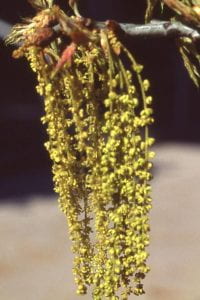
Both white and red oaks are monoecious meaning they have separate male and female flowers found on the same plant. Flowering begins in early spring, just before the leaves start to emerge. The male flowers are produced on long catkins and are the first to bloom. After about two weeks, the inconspicuous female flowers will open. Female flowers are sometimes mistaken for leaf buds and can be found on both upper branches and new twigs, just at the base of new leaves. They can only truly be appreciated with a magnifying glass.
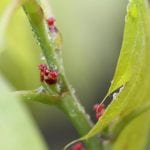
The male flowers shed their pollen and the wind carries it to the female flowers of neighboring trees. If the male flowers were above the female, the tree would more likely self-pollinate, so to ensure cross-pollination female flowers are located high in the tree, above the male flowers. Weather can affect acorn production. A rainy, damp spring will suppress pollination as the pollen will be washed to the ground. A cold snap can also kill the female flowers. Once fertilization occurs, a dry spell or other stressors can cause the tree to abort the acorns to conserve the trees resources.
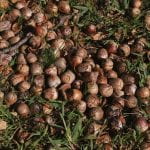 When all environmental factors work together, oak trees can produce an overabundance of acorns in what scientists call a “mast year.” The term mast comes from Old English word meaning “fat” or “food” and can be traced back to the same word origin that gave us “meat”. Perhaps that’s why the insides of nuts is called “the meat”. In a mast year, one mature oak tree can produce 10,000 acorns. Not every year is a mast year and not all trees have them in the same year. In fact, the exact cause of a “mast year” is still not completely understood. Scientists hypothesize that factors including weather and evolutionary adaptation play a part in this natural phenomenon.
When all environmental factors work together, oak trees can produce an overabundance of acorns in what scientists call a “mast year.” The term mast comes from Old English word meaning “fat” or “food” and can be traced back to the same word origin that gave us “meat”. Perhaps that’s why the insides of nuts is called “the meat”. In a mast year, one mature oak tree can produce 10,000 acorns. Not every year is a mast year and not all trees have them in the same year. In fact, the exact cause of a “mast year” is still not completely understood. Scientists hypothesize that factors including weather and evolutionary adaptation play a part in this natural phenomenon.
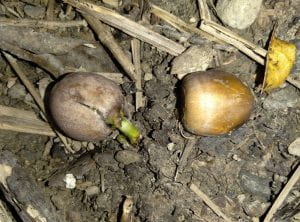
When it comes to acorn production scientist have observed a two to five year production cycle that includes a mast crop year, a few average years, and a poor year. Why have oaks (and other nut trees) developed this interesting quirk? One hypothesis is that it is a survival strategy. Oak trees depend on small mammals such as chipmunks and squirrels, and birds such as blue jays and woodpeckers for seed dispersal. When there is an overabundance of acorns produced not all of them will be eaten, ensuring that some of them will be able to germinate and grow into trees.
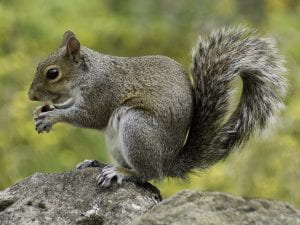
The acorn production cycle also has huge effects on the forest food web. Just under 100 species depend on the acorn as a primary source of food including birds, black bears, chipmunks, deer, mice, and squirrels. When the forest floor is full of acorns, the species that depend on the acorns for food have an easier winter. This results in an increase in the animal population the following year. Mast years use a lot of the tree’s resources, so they are often followed by a few years of lean or average acorn production. In years when there are fewer acorns, fewer animals survive, keeping the population in balance.
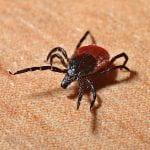
An interesting study conducted in southeastern New York shows that mast years not only effect the animal population that eat acorns, but it also effects tick populations that feed on the acorn eaters. After a mast year, populations of chipmunks, squirrels, and white-footed mice increase. These small mammals are key to the life cycle of the blacklegged or deer tick (Ixodes scapularis), the only vector for Lyme disease in the northeastern United States.
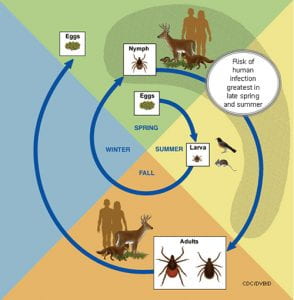
When tick eggs hatch in spring, the emerging larvae are not infected with Lyme disease. Their first host is usually a small mammal. If their first host is a carrier of Borrelia burgdorferi, the bacteria that causes Lyme disease, the ticks become infected. After feeding, the larval ticks drop-off their hosts and molt into nymphs. The following spring the nymphs, which now may carry Lyme disease, search for new hosts, and this time they are more likely to chose a large animal such as a deer or a human. As a result it has been observed that two years after an acorn mast year, Lyme disease cases see an uptick.
So next time you step on an acorn or hear one go THUNK! on your car or shed roof, remember that it is much more that just a fall decoration.
